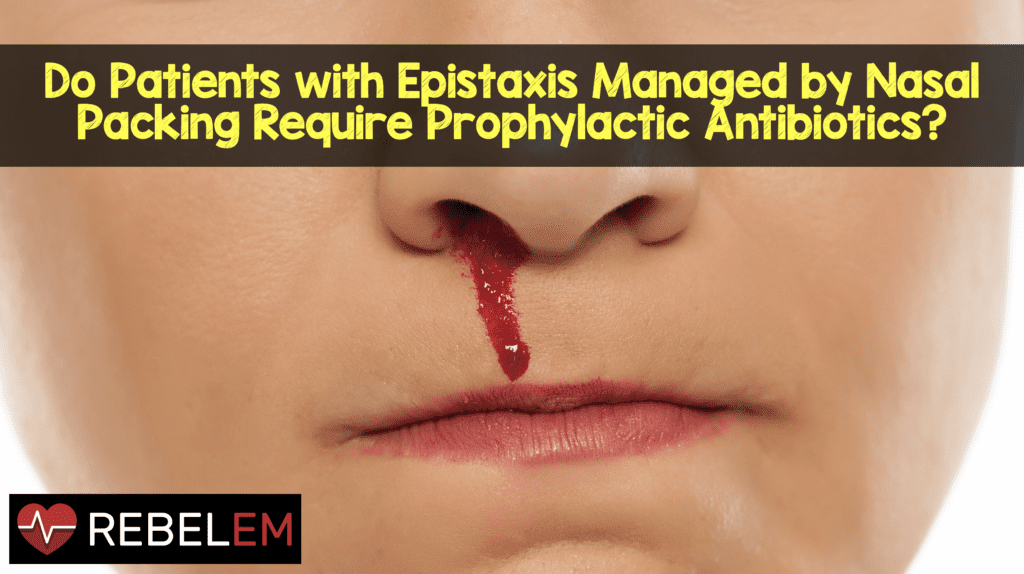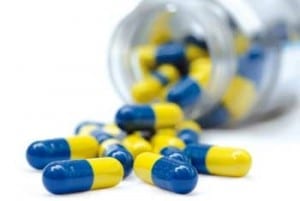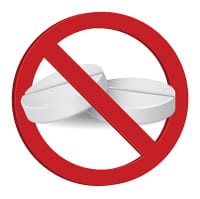 Epistaxis is a common Emergency Department (ED) complaint with over 450,000 visits per year and a lifetime incidence of 60% (Gifford 2008, Pallin 2005). Posterior epistaxis is considerably less common than anterior epistaxis and represents about 5-10% of all presentations. Many patients with posterior epistaxis will be managed with a posterior pack and admitted for further monitoring. Traditional teaching argues that:
Epistaxis is a common Emergency Department (ED) complaint with over 450,000 visits per year and a lifetime incidence of 60% (Gifford 2008, Pallin 2005). Posterior epistaxis is considerably less common than anterior epistaxis and represents about 5-10% of all presentations. Many patients with posterior epistaxis will be managed with a posterior pack and admitted for further monitoring. Traditional teaching argues that:
- Patients with nasal packs should be given prophylactic antibiotics to prevent serious infectious complications.
- Patients with posterior packs should be admitted to the ICU for cardiac monitoring as they are at risk for serious bradydysrhythmias.
Objective: To review the literature behind the traditional teaching and use the evidence to guide our management. In this post, we’ll take on the first dogmatic teaching of prophylactic antibiotics.
One important note, the literature base is scant on all topics regarding epistaxis. Randomized Double-Blind Control Trials (RDCT) are rare and study quality is overall very poor.
Dogma #1: Prophylactic antibiotics are necessary for patients with nasal packing.
The concern is that patients with packing in place are at a high risk of developing infectious complications including acute otitis media (AOM), sinusitis and toxic shock syndrome (TSS). A deep dive into the archives resulted in four studies that look at the question (1 on posterior packs, 2 on anterior packs and one non-specified).
Derkay CS et al. Posterior nasal packing. Are Intravenous antibiotics really necessary? Arch Otolaryngol 1989; 115: 439-41. PMID: 2923686
Population: RDCT of 20 patients with posterior packs (all packs were impregnated with antibiotics)
Intervention: Intravenous cefazolin
Control: Placebo (exact content not specifiec)
Outcome: Neither group had any infectious complications. The packing in the placebo group was noted to be foul smelling and 8/10 had heavy growth of multiple organisms. In the cefazolin group, 8/10 packing had light growth of a single organism.
Pepper C et al. Prospective study of the risk of not using prophylactic antibiotics in nasal packing for epistaxis. J Laryng Otology 2012: 257-9. PMID: 22214602
Population: Before and after, non-randomized, non-blinded study of 149 patients requiring packing for epistaxis.
Intervention: Amoxicillin/Clavulanic Acid in first 78 patients
Control: No antibiotics in 71 patients
Outcome: Neither group had an infectious complication
 Biswas D, Mal RK. Are systemic prophylactic antibiotics indicated with anterior packing for spontaneous epistaxis. Acta Oto-Laryngologica 2009; 129: 179-81. PMID: 18607977
Biswas D, Mal RK. Are systemic prophylactic antibiotics indicated with anterior packing for spontaneous epistaxis. Acta Oto-Laryngologica 2009; 129: 179-81. PMID: 18607977
Biggs TC et al. Should prophylactic antibiotics be used routinely in epistaxis patients with nasal packs? Ann R Coll Surg Engl 2013; 95: 40-2. PMID: 23317726
Unlike the prior two studies, the Biswas and Biggs articles are more difficult to interpret due to their methodologies. In the Biswas study, 21 patients had anterior packing of which 9 received antibiotics. The investigators sent swabs from the packed and unpacked nares and found no difference in bacterial growth in the antibiotic and no antibiotic group.
In the Biggs study, 57 patients in total were enrolled in a before and after study. 38 were enrolled prior to the institution of an algorithm, which called for limited use of antibiotics. In the before group, > 70% of patients were given prophylactic antibiotics versus just 12% in the after group. Neither group had any infectious complications despite the change in antibiotic prescription rate.
Summary: Although the three identified studies are of varying quality and methods, overall it appears that administration of IV, oral or topical antibiotics was no different than placebo in terms of infectious outcomes. It is important to note that in all studies, packing was removed after 24-48 hours.
 In the Derkay study, the presence of single organism growth in the antibiotic group raises the concern of selecting out resistant organisms. Additionally, antibiotics have a number of known nasty side effects including diarrhea (in up to 1 in 8 patients), allergic reactions and severe anaphylaxis (in up to 0.024%).
In the Derkay study, the presence of single organism growth in the antibiotic group raises the concern of selecting out resistant organisms. Additionally, antibiotics have a number of known nasty side effects including diarrhea (in up to 1 in 8 patients), allergic reactions and severe anaphylaxis (in up to 0.024%).
Bottom Line: The available evidence does not defend the routine use of prophylactic antibiotics in patients who require nasal packing for epistaxis. In patients with immunosuppression, they should be considered.
Post Peer Reviewed By: Salim Rezaie, MD (Twitter: @srrezaie)
References:
- Gifford TO, Orlandi RR. Epistaxis. Otolaryngol Clin North Am.
- 2008;41:525-536. PMID: 18435996
- Pallin DJ, Chng YM, McKay MP, et al. Epidemiology of epistaxis in US emergency departments, 1992 to 2001. Ann Emerg Med. 2005;46:77-81. PMID: 15988431
- Derkay CS et al. Posterior nasal packing. Are Intravenous antibiotics really necessary? Arch Otolaryngol 1989; 115: 439-41. PMID: 2923686
- Pepper C et al. Prospective study of the risk of not using prophylactic antibiotics in nasal packing for epistaxis. J Laryng Otology 2012: 257-9. PMID: 22214602
- Biswas D, Mal RK. Are systemic prophylactic antibiotics indicated with anterior packing for spontaneous epistaxis. Acta Oto-Laryngologica 2009; 129: 179-81. PMID: 18607977
- Biggs TC et al. Should prophylactic antibiotics be used routinely in epistaxis patients with nasal packs? Ann R Coll Surg Engl 2013; 95: 40-2. PMID: 23317726



